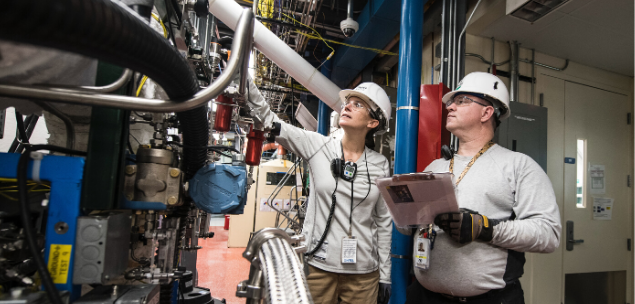A plan to re-ignite Australia’s languishing manufacturing sector was launched this week by the industry itself and will be delivered to government.
The plan, which contains 11 major recommendations, is entitled A New Deal Plan for Manufacturing. The plan was crowd sourced during April and May from Australia’s manufacturing communities, academics and industry experts.
It calls on a major commitment from the Federal and State Governments to lift Australia’s capacity to again be self sufficient in a range of industrial areas by:
- Establishing a National Industrial Strategy Commission
- Identifying critical sovereign manufacturing capabilities across the economy
- Creating a whole of industry workforce development plan
- Revamping government procurement policies that recognise value for money for the economy over the life of the product, as opposed to initial upfront cost
- Accelerating depreciation allowances to help manufacturers re-equip
Research and development of the plan was initiated by the Australian Manufacturing Forum Linkedin Group, the largest manufacturer group on social media, and @AuManufacturing news. More than 50 substantial submissions were received from readers and Forum members, and distilled into the New Deal Plan for Manufacturing.
Mr Peter Roberts, founder of the Australian Manufacturing Forum said, “We received close to 50 substantial submissions, numerous emails and phone calls, and hundreds of comments via our social media group that yielded 36 recommendations which will go to the taskforce on manufacturing set up by the National COVID-19 Coordination Commission.”
“After close to three decades of economic growth Australia’s luck has run out. It is imperative that we move on this and that we move quickly.”
Roberts said that there has been an air of economic complacency in Australia but the demise of the country’s manufacturing capability has left us vulnerable when the COVID-19 crisis hit.
“Today Australia is a wealthy nation. We enjoy one of the highest GDP’s per capita of any nation but the economic model we have been following failed at the first serious challenge.
“Our export income has held up during the Covid-19 pandemic, but our economy is revealed as fragile to external shock, narrowly based, and crucially, lacking in the deep manufacturing capabilities and capacity enjoyed by other advanced nations be they Germany, Israel, Singapore or Taiwan.
“Australia’s manufacturing capacity has been left to atrophy for too long, leaving Australia with the export profile of a third world nation, an industrial complexity similar to Senegal and Uganda, and a balance of trade deficit in elaborately transformed manufactures of $188 billion. Our appetite for imported cars and iPhones has to be paid for somehow, putting intolerable strain on other sectors to perform.”
Roberts said a spin off from this was that Australia was becoming less innovative with the R&D intensity of the economy falling from above two per cent of GDP only eight years ago, to 1.79 per cent today. Most worryingly business expenditure on R&D (BERD) which creates future wealth is also falling, down a massive 10 per cent in the latest year alone from 1.0 per cent of GDP to 0.9 per cent.
Recovery of the economy can occur if Australia acts now as the core of a strong local manufacturing industry still exists.
Companies such as CSL, which is the world’s number two biotechnology company, Austal , the world’s number one in aluminium hulled ships, and steelmaker BlueScope Steel, a global leader in steel coating and painting technology, represent the blueprint for growth.
In the technology sector sleep apnea company ResMed and hearing implant maker Cochlear dominate their global niches, and tna Solutions is a global success story in food machinery manufacture. And our defence producers are beginning to emerge onto the world stage. All this is backed by a world-leading public research sector.
“But to make more of the enormous potential of Australian manufacturing, our policy settings need a reset,” Roberts said.

